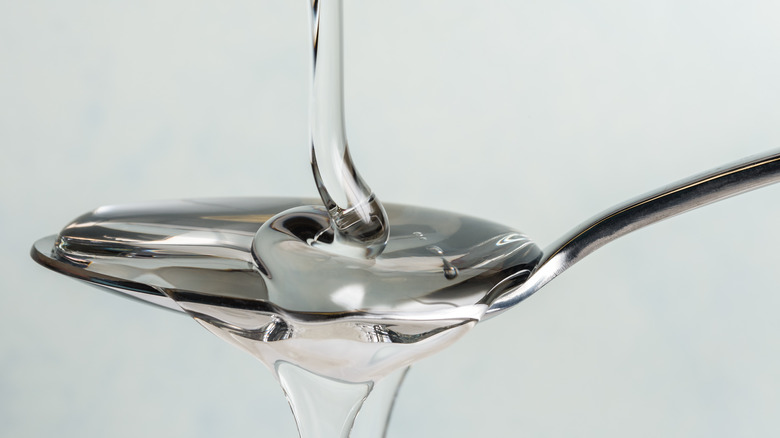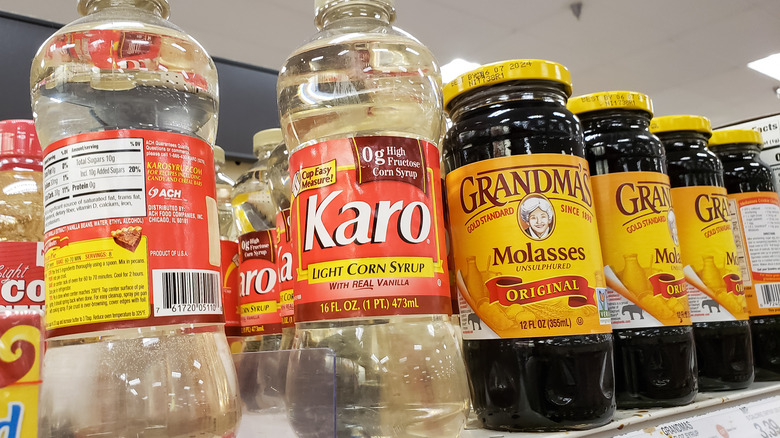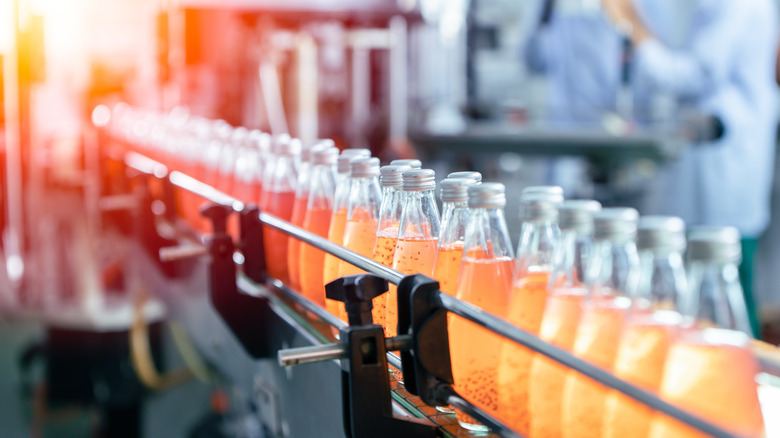The Real Difference Between Corn Syrup And High-Fructose Corn Syrup
Health risks have been so strongly associated with high-fructose corn syrup that passing a bottle of "corn syrup" in the grocery store might cause you to think, "Why are they selling that stuff?" The truth is, corn syrup and high-fructose corn syrup are two different products, though it's understandable why people might get them confused.
Much has been made about the dangers of high-fructose corn syrup, but we don't really know if it is any worse than other sweeteners. In fact, high-fructose corn syrup is chemically similar to white table sugar.
The problem, as the world-renowned clinic points out, is that high-fructose corn syrup is extremely prevalent. It often shows up in products that we don't associate with sweetness. Because of this, it's easy for the average consumer to eat far too much high-fructose corn syrup without even realizing it.
The USDA's Dietary Guidelines for Americans recommends that 10% of daily calories or less come from sugar. When high-fructose corn syrup is in so many of the things we eat, it can be hard to stick to that limit.
So what is the difference between high-fructose corn syrup and regular corn syrup?
Making light and dark corn syrup
Both types of corn syrup come from corn starch. According to Master Class, regular corn syrup is made by first adding water to corn starch. Then, enzymes are used to break long-chain corn starch molecules into shorter-chain molecules of glucose and maltose. The more time allowed for enzymes to break down starch molecules, the more glucose is produced, resulting in a sweeter, thicker syrup.
Producers can then incorporate additives to create light or dark corn syrup. Light corn syrup is translucent and typically flavored with vanilla. Dark corn syrup generally incorporates molasses to produce deeper flavors and darker colors. Both types of corn syrup are used to make baked goods, jellies, jams, candies, and various confections.
Pure corn syrup can be further processed into high-fructose corn syrup with the addition of more enzymes. According to the FDA, this process converts some of the glucose to fructose.
Making the distinction between corn syrup and high-fructose corn syrup
High-fructose syrup typically contains either 42% (HFCS 42) or 55% (HFCS 55) fructose. HFCS 42 is commonly used in cereals and commercially-produced baked goods to lock in moisture, thereby extending shelf life. HFCS 55 is mostly used in the production of soft drinks because it stays in solution better than granular sugar (via FDA).
Since 1970, the availability of corn-based sweeteners has risen significantly, while the availability of refined cane and beet sugars has fallen (via USDA). Critics of high-fructose corn syrup point to this inverse relationship as a cause of declining public health over the past 50 years. Research studies that warn about high-fructose corn syrup base their conclusions on the negative results of fructose metabolism.
While the science behind high-fructose corn syrup isn't quite settled, hopefully, a distinction between the two types of syrup is now settled for you.


